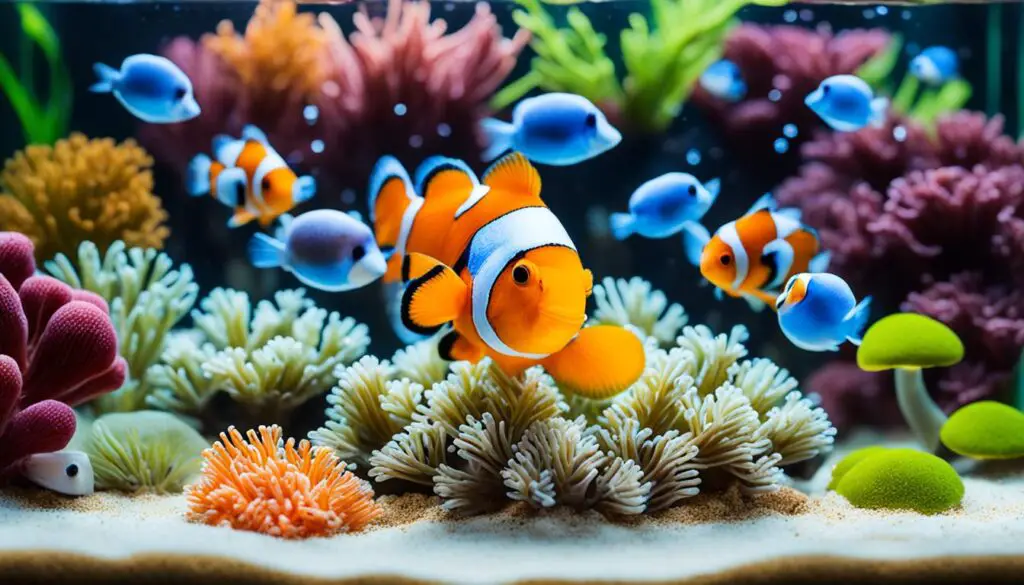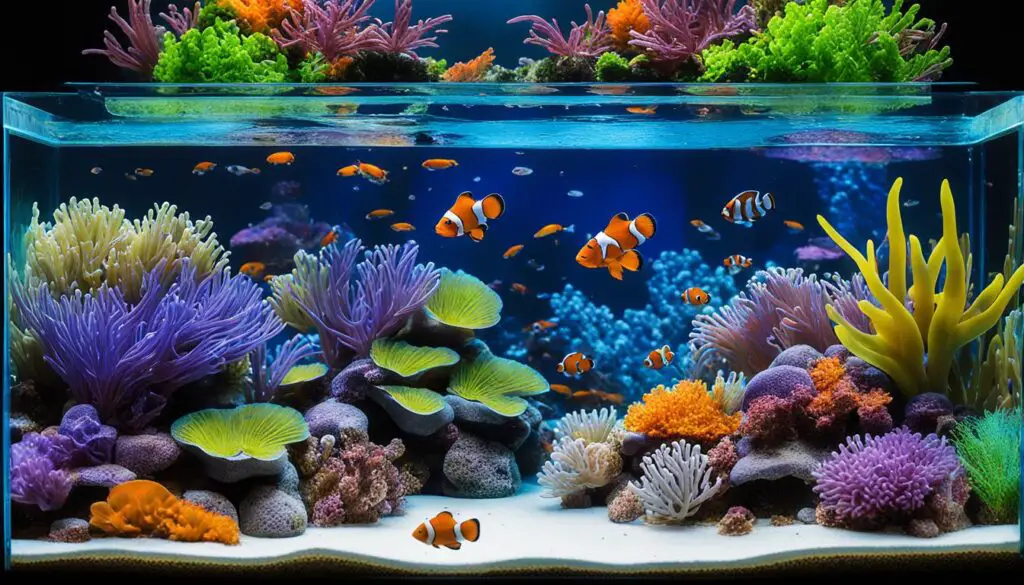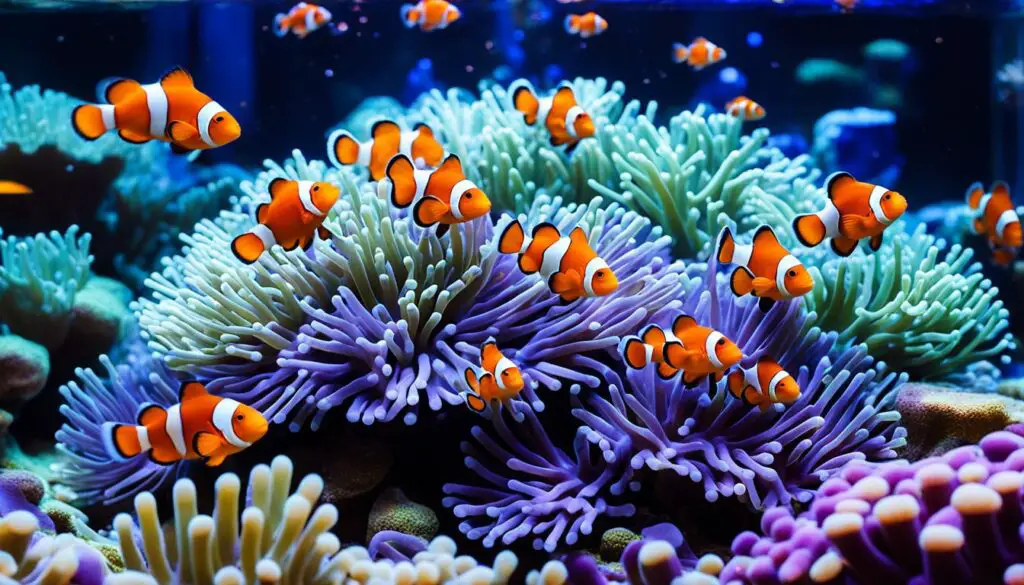Can Hermit Crabs Drink Tap Water

Introduction
Can Hermit Crabs Drink Tap Water: Hermit crabs live, those fascinating and often misunderstood little creatures, have been cherished as pets for decades. Their unique habit of inhabiting discarded shells and their quirky personalities make them a favorite among many animal enthusiasts. However, caring for hermit crabs isn’t always as straightforward as it might seem. One of the common questions that perplexes hermit crab owners is whether these peculiar crustaceans can drink tap water.
The answer to this question isn’t a simple yes or no; it’s a matter of understanding the specific needs and behaviors of hermit crabs. While it may be tempting to assume that tap water is suitable for all pets, hermit crabs have particular requirements due to their sensitivity to chlorine, heavy metals, and other potential contaminants often found in tap water.
In this discussion, we’ll delve into the intricate world of hermit crab care and explore the complexities of providing them with an adequate source of hydration. We’ll discuss the potential risks associated with tap water and consider alternative options to ensure the well-being of these intriguing creatures. By the end, you’ll have a comprehensive understanding of whether hermit crabs can indeed drink tap water and the best practices to maintain their health and happiness as cherished members of your household.

What kind of water can hermit crabs drink?
Water sources.
Hermit crabs require both freshwater and saltwater water sources to survive. Saltwater should be made using sea salt sold for marine fish and crustaceans.
Hermit crabs have specific water requirements that are crucial for their well-being. It’s essential to recognize that not all water sources are suitable for these creatures, as they are sensitive to certain contaminants. Hermit crabs primarily need access to freshwater for drinking and saltwater for bathing and maintaining the proper balance of salts in their bodies.
Freshwater should be free from chlorine and heavy metals, which can be harmful to them. As such, tap water, unless treated and dechlorinated, can pose a risk to hermit crabs. Hermit crab owners often use dechlorinated tap water, bottled spring water, or well water as freshwater sources. Marine or saltwater, on the other hand, is essential for hermit crabs to maintain their exoskeleton and overall health. It should be prepared using marine salt mixtures specifically designed for aquariums to ensure the correct salinity levels.
Offering both freshwater and saltwater in separate containers within their habitat is a best practice to allow hermit crabs to regulate their hydration and salt balance. It’s crucial to monitor the quality of water regularly, as maintaining clean and suitable water sources is paramount in providing a comfortable and thriving environment for these fascinating crustaceans.
Can hermit crabs drink regular tap water?
Use bottled or de-chlorinated tap water for their Fresh water supply. Chlorine found in tap water is harmful to hermit crabs. In order to make tap water safe, de-chlorination drops can be used to remove Chlorine.
Hermit crabs, those intriguing creatures with their mobile homes, often raise questions about their care and specific needs. One common query is whether hermit crabs can drink regular tap water. The answer to this question is not a simple yes or no, as it depends on various factors. The primary concern with using tap water for hermit crabs is the presence of chlorine and potentially harmful heavy metals in many municipal water supplies.
Chlorine often added to tap water as a disinfectant, can be harmful to hermit crabs, irritating their gills and leading to stress or health problems. Similarly, heavy metals, such as copper or lead, can be toxic to these sensitive creatures. To make tap water safe for hermit crabs, it needs to be treated to remove chlorine and other contaminants. This can be achieved by using a dechlorinator or water conditioner specifically designed for aquarium use.
However, an even safer approach is to provide hermit crabs with water that is known to be free from these contaminants, such as bottled spring water or well water. These sources typically do not contain chlorine and are thus less likely to harm your pets, offering them access to both freshwater and marine or saltwater is crucial, as hermit crabs require the latter for maintaining their exoskeleton and overall health.
While tap water can be used for hermit crabs if properly treated with a suitable water conditioner, it is often advisable to err on the side of caution by using known safe water sources like bottled spring water. The well-being of these unique pets depends on maintaining water quality and providing them with the best possible environment, making water quality a critical consideration for hermit crab owners.
What happens if you give your hermit crab tap water?
Never give your hermit crabs untreated tap water. There are many places in the US where tap water contains chemicals which will kill hermit crabs. You need to treat the water first just like you would treat tap water before adding it to an aquarium.
Giving your hermit crab tap water without proper treatment can have adverse effects on these sensitive crustaceans. Tap water typically contains chlorine and potentially harmful heavy metals, which can be detrimental to hermit crabs. Chlorine, often used as a disinfectant in municipal water supplies, can irritate a hermit crab’s gills, leading to stress and potentially compromising their health.
Heavy metals like copper and lead found in tap water can be toxic to these creatures. When exposed to these contaminants, hermit crabs may become lethargic, lose their appetites, or even exhibit unusual behaviors as they try to cope with the water’s adverse effects. Over time, these issues can lead to more severe health problems or even death.
To prevent these negative consequences, it’s essential to use a water conditioner or dechlorinator specifically designed for aquarium use to treat tap water and make it safe for your hermit crabs. This process helps neutralize chlorine and remove other potential impurities, making the water suitable for your pets.
Alternatively, offering them access to known safe water sources, such as bottled spring water or well water, can eliminate the risk altogether. Hermit crabs thrive in environments with clean, treated water that meets their specific requirements, so careful consideration of water quality is crucial for maintaining the well-being of these unique and captivating creatures.
Can hermit crabs drink bottle water?
Another alternative is to use bottled water for your hermit crabs fresh water supply and also use it to mix with aquarium salt such as Instant Ocean or Hermit Crab Soaking Salt to make salt water. Do not use table salt, it contains iodine which can be harmful to crabs.
Hermit crabs can safely drink bottled water, specifically bottled spring water, as long as it is free from contaminants that could harm them. Providing bottled spring water is often a preferred choice for hermit crab owners because it typically lacks the chlorine and heavy metals that can be found in tap water. These chemicals, if present, can be harmful to hermit crabs, leading to health issues or stress. By using bottled spring water, you eliminate the need for water conditioning or dechlorination, which can be necessary for tap water.
Such as flavorings or minerals, as these can be detrimental to hermit crabs. Always check the label to confirm that it’s pure spring water, it’s a good practice to offer both freshwater and marine or saltwater in separate containers within their habitat to allow hermit crabs to regulate their hydration and salt balance, promoting their well-being and overall health. providing bottled spring water can be a convenient and safe option for your hermit crabs, ensuring they have access to a clean and suitable water source in their enclosure.
Do hermit crabs need salt water?
They need fresh and salt water. Use Prime Water Conditioner on both waters, then add Instant Ocean to the salt water bowl. The hermit crab will drink some “toe dipping”. They also will submerge in it, and create a brackish water in their shell.
Hermit crabs do need access to salt water in their habitat to maintain their health and well-being. Saltwater is essential for several crucial aspects of their life. One of the primary reasons hermit crabs require salt water is for the health of their exoskeletons. Their exoskeletons consist of layers of chitin and minerals, and these structures need a proper balance of salts to remain strong and functional. Without access to salt water, hermit crabs can suffer from soft exoskeletons, making them vulnerable to injury and unable to protect themselves adequately.
Saltwater aids in maintaining the osmotic balance within their bodies. Hermit crabs have a natural system for regulating the salinity of their hemolymph (a substance similar to blood), and access to salt water is crucial for this purpose. Without salt water, their internal salt levels can become imbalanced, which can lead to severe health issues.
Ensuring that the salinity level is appropriate for marine organisms. This can be achieved by using marine salt mixtures specifically designed for aquariums. Hermit crabs will often alternate between fresh water and salt water, immersing themselves in the latter to maintain their exoskeleton and balance their internal salinity levels. saltwater is not just a luxury but a necessity for the health and vitality of hermit crabs, making it an integral part of their care and habitat.
Is tap water safe for hermit crabs?
Use bottled or de-chlorinated tap water for their Fresh water supply. Chlorine found in tap water is harmful to hermit crabs. In order to make tap water safe, de-chlorination drops can be used to remove Chlorine.
Tap water is not inherently safe for hermit crabs. The primary concern with using tap water for these sensitive creatures lies in the presence of chlorine and potential heavy metals. Chlorine is often added to tap water as a disinfectant, and this chemical can irritate a hermit crab’s gills, leading to stress and health problems. Similarly, heavy metals like copper or lead, which may be present in tap water, can be toxic to these creatures.
To make tap water safe for hermit crabs, it needs to be treated with a water conditioner or dechlorinator specifically designed for aquarium use. This process helps neutralize the chlorine and remove other potential impurities, making the water suitable for your pets. Using treated tap water can be a viable option, but it is still advisable to test the water quality to ensure it meets the required standards.
A safer and more convenient alternative is to offer your hermit crabs access to known safe water sources like bottled spring water or well water, which are less likely to contain chlorine or heavy metals. This approach eliminates the need for water treatment and reduces the risk of exposing your hermit crabs to potentially harmful contaminants. Ensuring that your hermit crabs have access to clean, high-quality water is essential for their well-being, as their overall health and vitality are closely tied to the quality of their hydration sources.
Can crabs survive in normal water?
They belong to eight families, each with a limited distribution, although various crabs from other families are also able to tolerate freshwater conditions (euryhaline) or are secondarily adapted to fresh water.
Crabs, particularly those of marine or brackish water species, cannot survive in “normal” freshwater conditions for extended periods. Most crabs, including those commonly found in coastal environments, require a specific salinity level that is lower than seawater but higher than freshwater.
Attempting to keep them in freshwater can be detrimental, as it disrupts their internal osmotic balance and can lead to health problems, stress, and even death. Marine crabs, like blue crabs or fiddler crabs, are adapted to brackish or marine environments, and they need water with the appropriate salinity to thrive. These crabs have specialized mechanisms for regulating the salt levels within their bodies, and introducing them to freshwater disrupts this balance.
On the other hand, some species of crabs, such as freshwater crabs, are well-suited to live in freshwater environments and cannot tolerate saltwater. They are specifically adapted to freshwater conditions and have evolved to thrive in such habitats. Attempting to keep them in salt water would have similar adverse effects, stressing and potentially harming these crabs.
The ability of crabs to survive in different water conditions depends on their species and the specific salinity requirements they have evolved to tolerate. It is crucial to understand the habitat needs of the crab species you are dealing with to ensure their health and well-being in captivity or when encountered in the wild.
Can hermit crabs live in fresh water?
Clibanarius fonticola is a species of hermit crab from Vanuatu. It lives exclusively in fresh water, the only hermit crab in the world to do so.
Hermit crabs, like many other crustaceans, cannot thrive in freshwater. They have specific environmental needs that include access to saltwater for various vital functions. Hermit crabs are adapted to brackish or marine environments and require the correct salinity levels to maintain their health. Attempting to house them in freshwater can be detrimental, as it disrupts their internal osmotic balance, potentially causing harm, stress, or even death.
Hermit crabs need saltwater to facilitate vital physiological processes, such as maintaining the integrity of their exoskeletons. Their exoskeletons consist of layers of chitin and minerals, and these structures require a proper balance of salts to remain strong and functional. Without access to saltwater, hermit crabs can suffer from soft exoskeletons, making them vulnerable to injury and unable to protect themselves adequately.
To ensure the well-being of hermit crabs, it is essential to provide them with both freshwater and marine or saltwater in separate containers within their habitat. The saltwater should be prepared using marine salt mixtures designed for aquarium use to achieve the appropriate salinity levels. This allows hermit crabs to immerse themselves in the saltwater to maintain their exoskeletons and regulate their internal salt balance. freshwater is not suitable for hermit crabs, and they require access to saltwater to ensure their health and vitality.

Conclusion
The question of whether hermit crabs can safely drink tap water isn’t a straightforward one. While it might be acceptable in some cases, it comes with potential risks due to the presence of chlorine and heavy metals. As responsible hermit crab owners, it’s crucial to prioritize the well-being of these unique pets.
Through our exploration, we’ve uncovered several key considerations for providing suitable hydration to hermit crabs. Water conditioning and dechlorination are essential practices to make tap water safer for your pets. However, a more foolproof approach is to provide them with dechlorinated water or, even better, marine or saltwater. Maintaining the proper humidity levels in their enclosure is also vital, as it aids in preventing dehydration and ensuring their overall health.
Hermit crab care extends beyond their water needs. Temperature, diet, and habitat conditions all play significant roles in their happiness and longevity. Investing time and effort in understanding these factors is fundamental to providing a thriving environment for your hermit crabs.
In our quest to provide optimal care, we’ve learned that while tap water may be a last resort, it’s not the ideal choice for ensuring your hermit crabs’ health. With the right and commitment to their well-being, you can create a safe and nurturing environment for these captivating creatures, enriching both your life and theirs as they continue to thrive in their unique shells.



